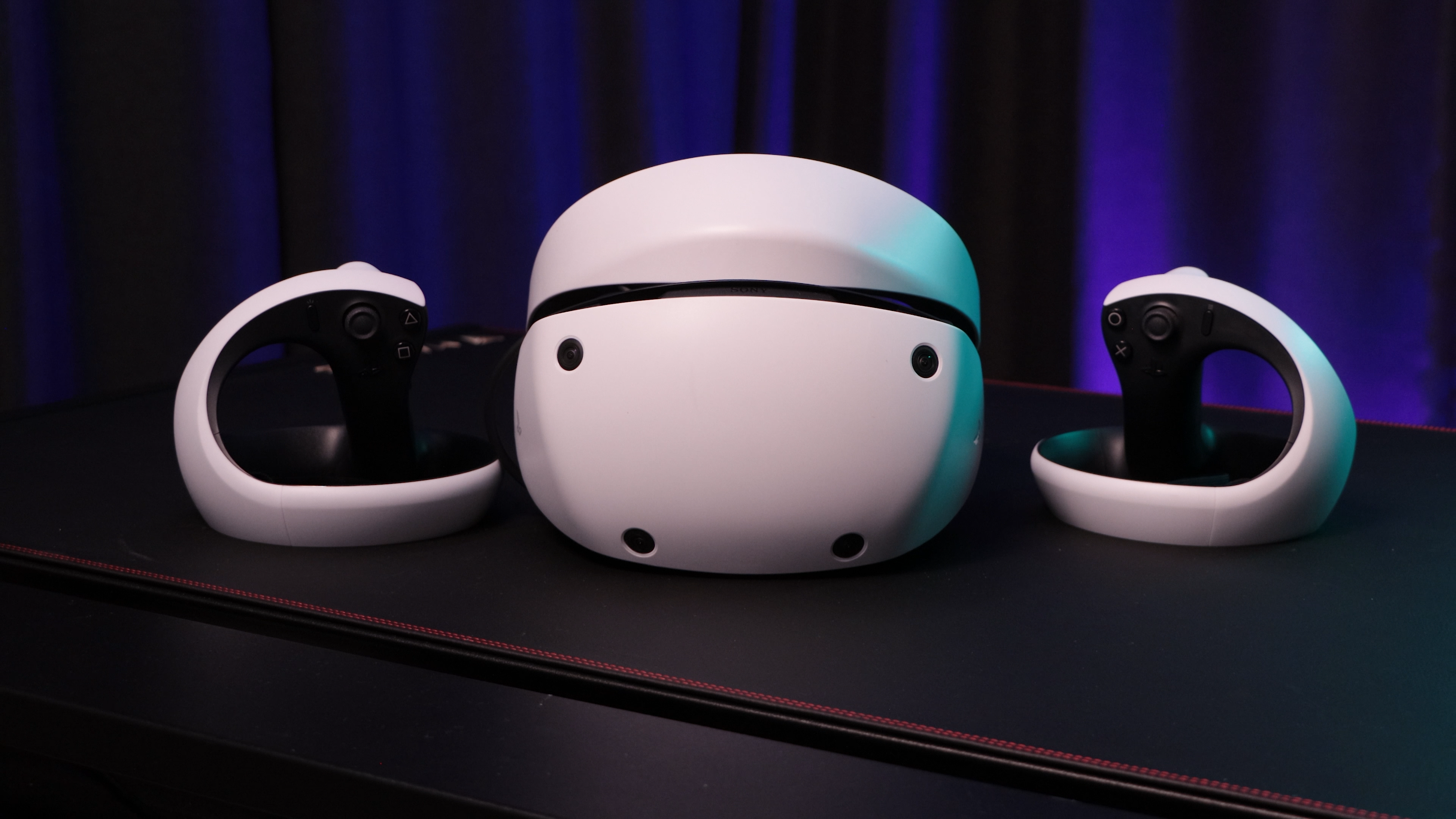GamesRadar+ Verdict
PSVR 2 is an excellent VR gaming platform that has so much potential. Although its price may seem high for a console accessory, it justifies itself as so much more than that, with features that even the best VR headsets on the market struggle to pack in. The controllers ground you in every experience, the spatial tracking is excellent, and being able to play non-VR content on PSVR 2's beautiful display is a true highlight. The headband can feel a tad cheap, but if Sony supports this properly in years to come, it's an easy recommendation.
Pros
- +
Premium VR feature set for the money
- +
Excellent controllers
- +
Accurate spatial tracking
- +
Cinematic Mode
Cons
- -
Headband could feel more premium
- -
It isn't compatible with PSVR1 games, or with PC
Why you can trust GamesRadar+
The leadup to PSVR 2 has felt eerily familiar. When PSVR launched back in 2017, it generated the same excitement for an accessible route into VR gaming, along with similar frustrations at its high price tag.
PSVR became less of a priority for Sony since its move to bigger and better flagship hardware, but I think it's fair to say that it didn't put PSVR out to die. The console giant put a substantial amount of first party focus into creating VR games, and continued to support the platform as time went on. In 2023, it's returning to market with a new headset that, like the PS5 before it, is packed with potential.
As expensive as a console "peripheral" feels at $549 (more expensive than the PlayStation it's tied to, I might add), it's important to remember that this is more than an Eye-Toy; it's much more than a set of Move controllers. This is an entirely new platform that lets you experience games in a whole new way - it just happens to be integrated into the PlayStation ecosystem.
In fact, the feature set that's present in PSVR 2 punches well above what we've previously seen for VR headsets at this price point. While most folks would draw comparisons to other accessible VR platforms like Meta Quest 2, I find it far easier to compare Sony's latest visor to the absolute best VR headsets on the market like the HTC Vive Pro 2. Make no mistake - this is a next-gen headset that, within the virtual reality market, sits at an excellent price point.
The question of whether you should buy one will be down to how PlayStation supports it going forward, and whether or not your virtual interests extend into the $500+ price range.
Design
PSVR 2 makes some welcome improvements over its predecessor. No longer do you feel the noose of heavy cables and HDMI converters around your neck. One simple USB-C cable is fixed into the headset at one end, giving you plenty of breathing room and never tying you down or getting in the way of your What the Bat arm swings.
Thankfully, this headset doesn't feel nearly as heavy on your face as its predecessor. One simple headband that runs laterally around the top of your noggin is all that secures the visor to your face, but the weight distribution is thoughtful, and the light shield is comfortable enough padding on the face. On the back of the headband you'll find a small winding dial and release button used to secure the fit around your head.
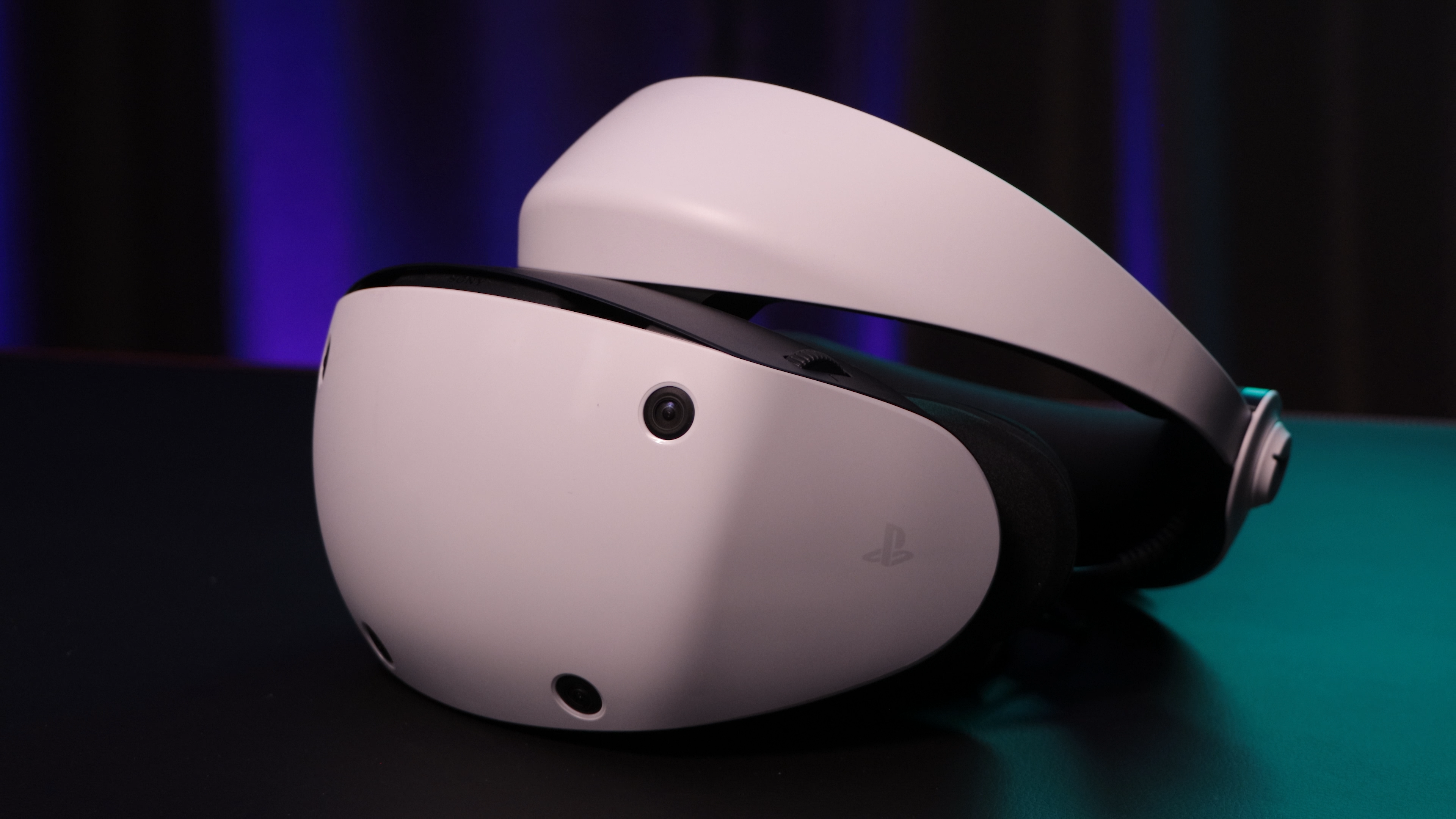
Arguably, one reason why PSVR 2 feels lighter on the head is because it isn't nearly as bulky, packing a lot more punch into what feels like a smaller headset. The first PSVR looked like it was trying to blend in with the slightly odd-looking Move controllers it gave a second life to. The white outer shell and rounded corners of PSVR 2 feel, and appear, a lot more premium than PSVR ever did. Nestling itself into the aesthetics of the PS5 and Sony INZONE products, PSVR 2 is immediately recognizable as a member of the family.
Inside the headset sits an OLED display with a per-eye resolution of 2000 x 2040, and a refresh rate of 120Hz. Approximately, and depending on the game you're playing, you'll get a 110 degree field of view, with a vignette that's damn near invisible - another welcome change from the first PlayStation VR. Lens separation is adjustable via a slider on the top left corner of the headset, although I wish there were more options for adjusting tilt and distance from the eyes, since this would help to create a more consistent and secure fit every time.
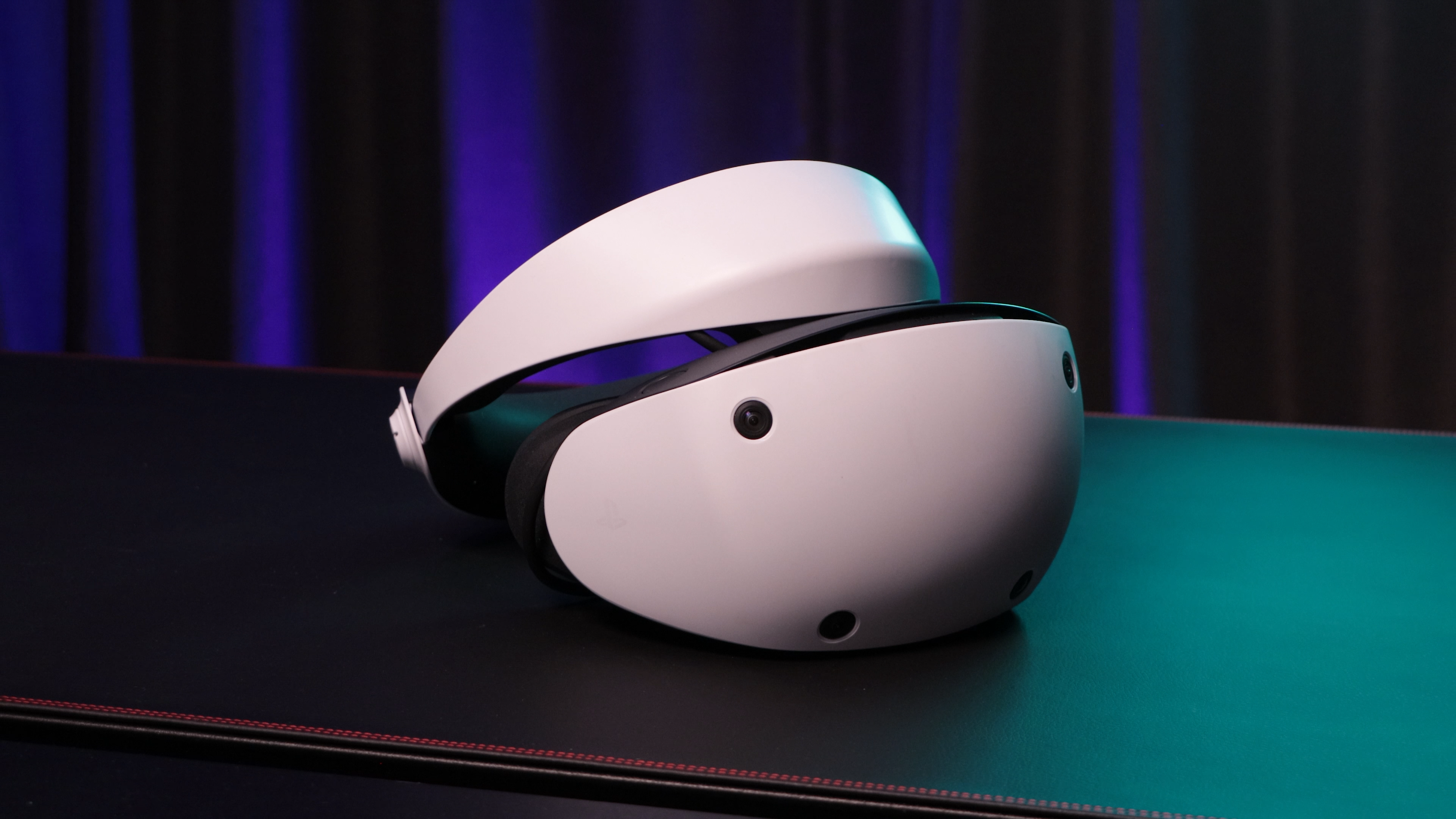
Particularly the first few times you put on the headset, you need to play around to find that perfect position so the display doesn't appear fuzzy. Designing a headset with more fit leeway may have helped first-time VR purchasers, since this may cause some to question how things are "supposed" to look.
For audio, a stereo headphone jack can be found on the inner-left part of the headband. Included in the box is a nifty earphone attachment which feels the most natural audio solution to use, and has better audio quality than I expected. Other wired and wireless headsets will work with PSVR 2 as well, you'll just need to fiddle with how things fit together to ensure maximum comfort.
On the bottom of the headset, you'll find the passthrough button which, when pressed, opens up the view from the four embedded cameras otherwise used for controller and spatial tracking. The bottom also houses the built-in microphone and power button, which gives you a satisfying rumble to the forehead with each boot-up.
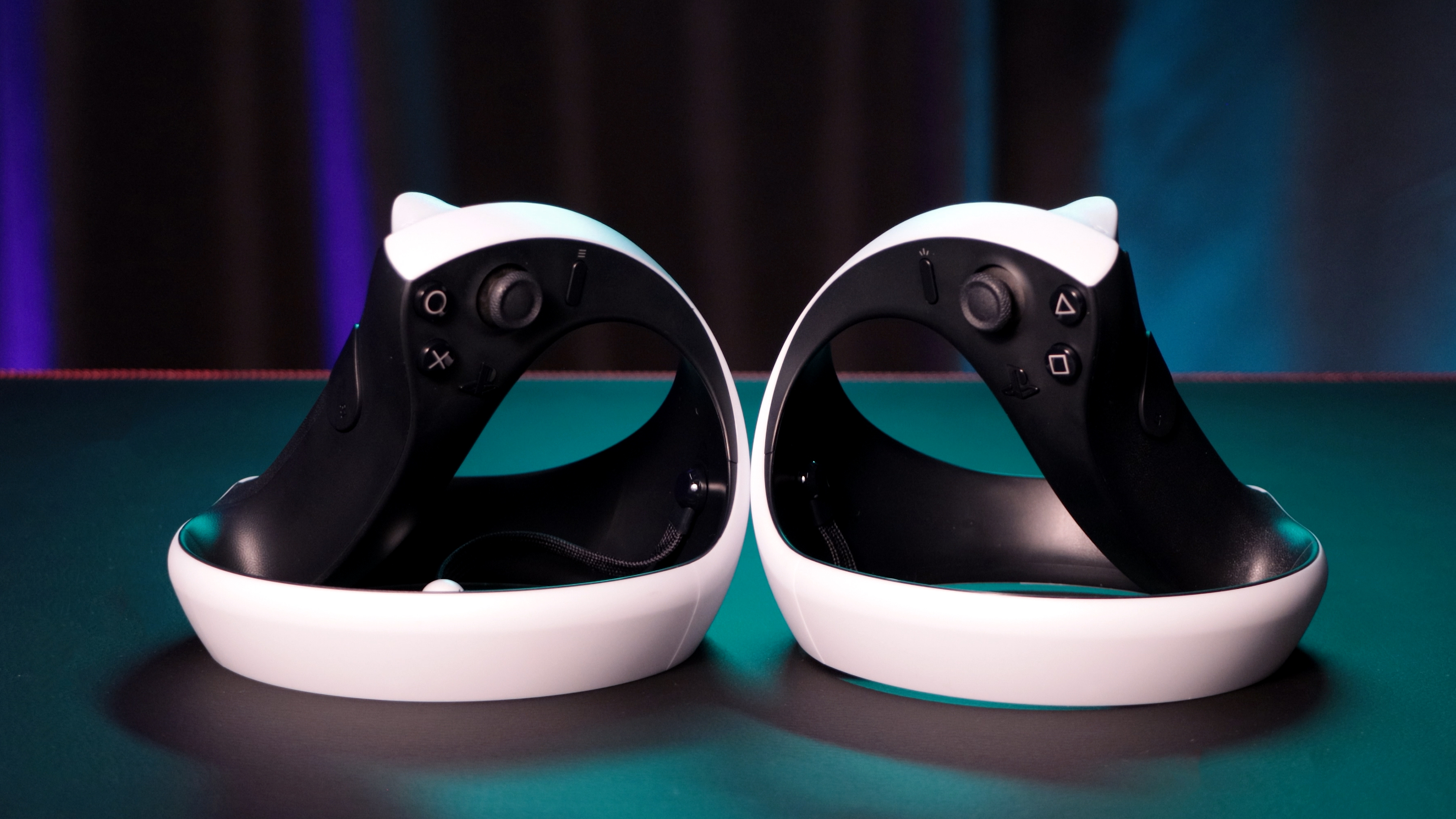
Another big improvement over the first PSVR (and one that gives me confidence that Sony really means business this time), is the fact that with your purchase, you get a set of bespoke controllers. These are some of the best VR controllers I've used, and their adoption of the DualSense's best features like haptic feedback and trigger resistance helps to make you feel so present in each game you try out. In all honesty, I feel like these features have never felt more at home than they do when using the VR2 Sense controllers.
Features
For VR-enthusiasts, PSVR 2's most impressive feature might be its eye-tracking capabilities, since these enable the process of foveated rendering. This is a particularly tricky feature to review, since my human eyes can only really focus on one thing at a time. On some level, we'll have to take Sony's word for it that what you look at in-game will have a resolution boost. For what it's worth, using eye-tracking in the menus of Horizon Call of the Mountain always worked accurately, although it does take some getting used to.
I'd also draw attention to PSVR 2's Cinematic Mode as a standout feature, as it lets you access non-VR content while using PSVR 2. This is by far one of my favorite PSVR 2 features so far. Thanks to that crisp OLED display, non-VR content like God of War Ragnarok looked as vivid and detailed as it did on my 4K TV, and even smoother thanks to the 120Hz refresh rate. The screen size is much more adjustable than with the first PSVR's Cinematic Mode, and it's an incredible way to lock yourself into the best PS5 games without any distractions.
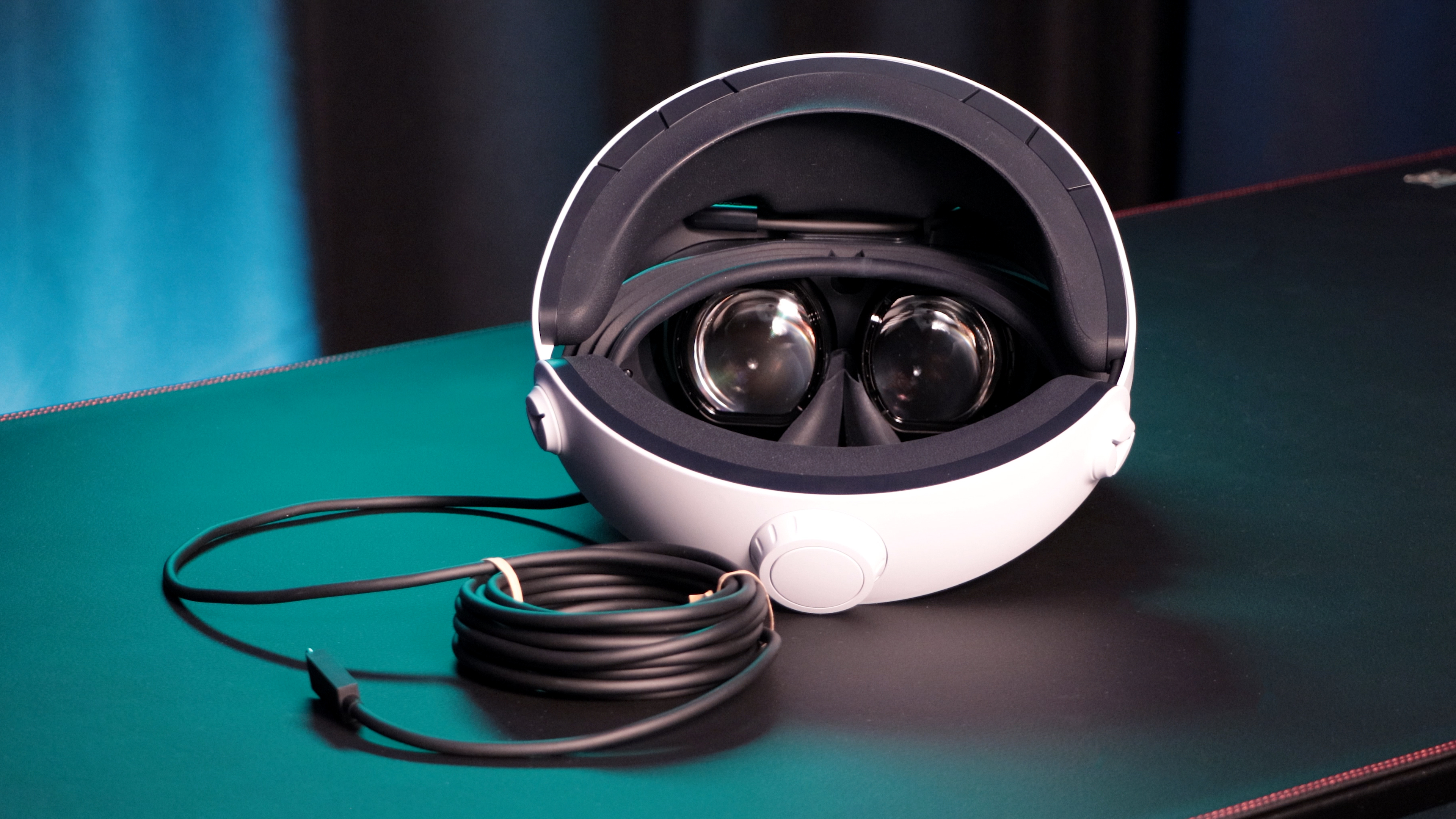
In the front of the headband, you get the added benefit of haptic feedback, which is another ingenious feature you won't find in contemporary VR headsets. When a malicious winged machine flies meters above my head in Horizon Call of the Mountain, I feel totally grounded in the experience because of the way the headset rattles my forehead. I just wish this was a feature that was utilised by more of the best PSVR 2 games available in the launch window. Going forward, I hope game developers take note, and utilise this brilliant wee feature.
Room tracking in PSVR 2 is excellent - so much so that it frequently switches between reliable safety net and virtual fun-sponge. Should you get to the edge of your mapped-out play area, your hand will glow red, and the previously invisible walls PSVR 2 tracks around you will show up as a netted bubble. To put it simply; this just works - and works consistently. Plus, it never takes long to set up if you've changed room. Tracking the floor is super easy for PSVR 2, as it seems to get the right height on its own without an ounce of difficulty. Should you be less worried about damaging your immediate surroundings, there is the option in the PS5's dedicated-VR menus to tone down how sensitive these warnings are.
Performance
All of these specs and features add up to a highly cohesive VR package for the amount of money you spend. I'm willing to admit that having never felt motion sick from a VR game before, Horizon Call of the Mountain was the first title to change that for me. I'm not entirely sure if it was the climbing, or the extremely lifelike hands that mimic your every finger twitch thanks to capacitive sensors in the VR2 Sense controllers, but either way, breaks had to be taken. The presence I felt in PSVR 2 games was off the charts, and I have no doubt that's the result of these high-end VR features working together.
Elsewhere, controller tracking was second-to-none in games like Star Wars: Tales from the Galaxy's Edge. In a game where I was constantly picking up weapons, snapping them to my utility belt, or attaching things to my Chewbacca-style bandolier, controller tracking was fundamental to making those things feel real. I'm happy to report that after a decade of Sony stubbornly muscling six-axis motion into everything it could, it's finally come into its own in PSVR 2's lightweight controllers. All-in-all, these lasted around 6-7 hours of continuous use, but thankfully only charged in around 90 minutes or less. They also come with useful hand straps, and fit the hands of plenty of GamesRadar staff members who gave them a try.
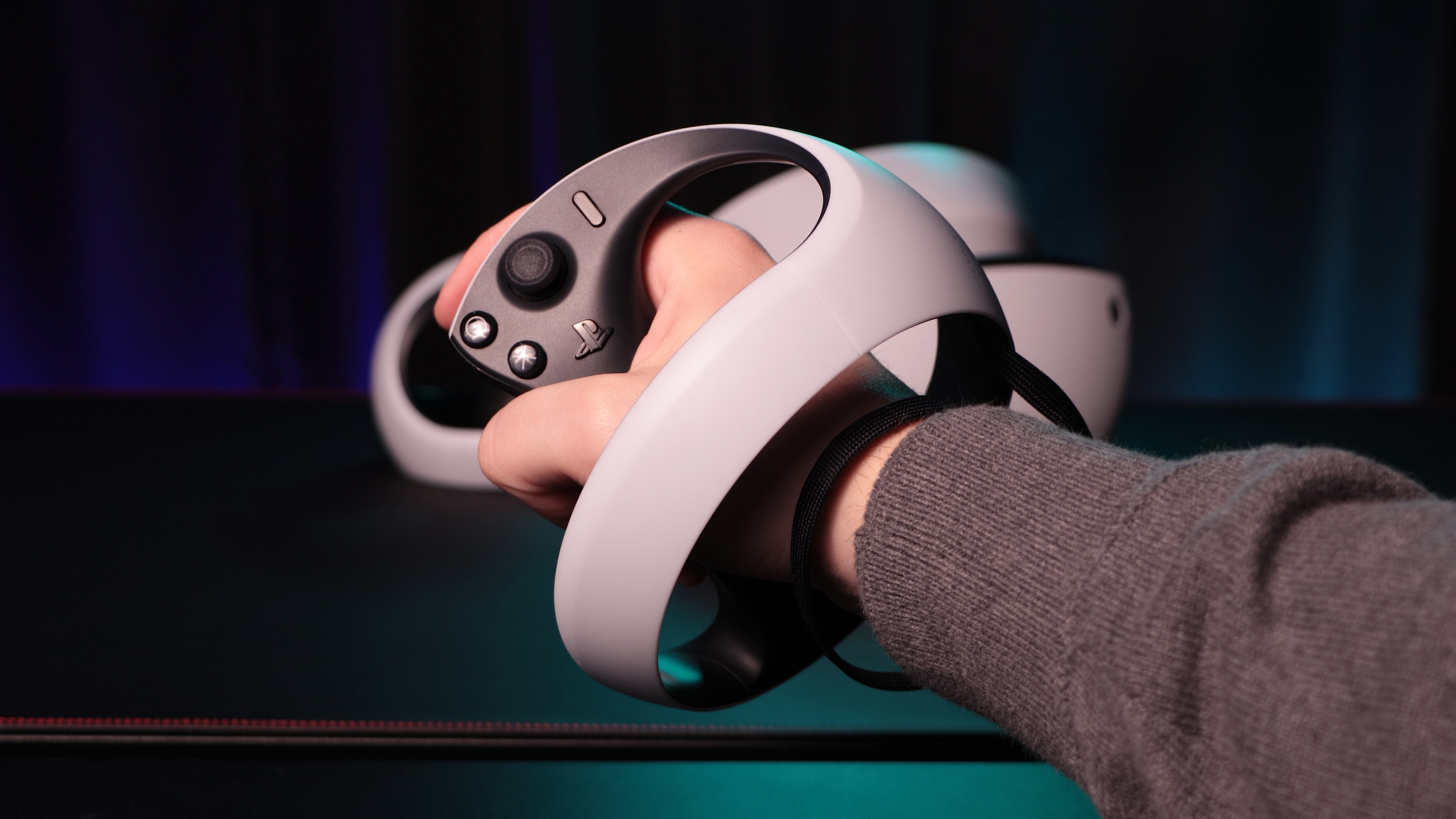
The display itself is stunning. VR should be a gaming platform that makes you chuckle with delight, or stand open-mouthed at the virtual worlds that surround you. PSVR 2's OLED 120Hz screen certainly makes good on that promise, and even made those moments happen for folks in the GamesRadar ranks who have played plenty of VR games before - myself included. Games like Moss: Book II and The Last Clockwinder have softer, more illustrative visual styles than flagship titles like Horizon, but even these looked so incredibly detailed. These painting-in-motion games are brought to life in such special ways by PSVR 2's display, and it makes me very excited to revisit PlayStation's diverse indie catalogue in Cinematic Mode.
That brings me to the fit, and the headband. Although everyone's head shape is slightly different and your mileage may vary, I never feel like I'm getting a consistent fit each time I throw on the headset. During my week with it, PSVR 2 has been prone to slips, sometimes needing adjustments during longer sessions. Luckily, there's enough room inside the visor for my fairly thick-framed glasses. If you too are a glasses wearer, and you pair PSVR 2 with your best gaming headset, it may put a little extra pressure on your nose and face. This never reaches the point of being painful for me though. In my opinion, the headband is one of the only parts of the package that doesn't feel truly premium, and the plastic clicking noises that emit during the fitting process personify that.
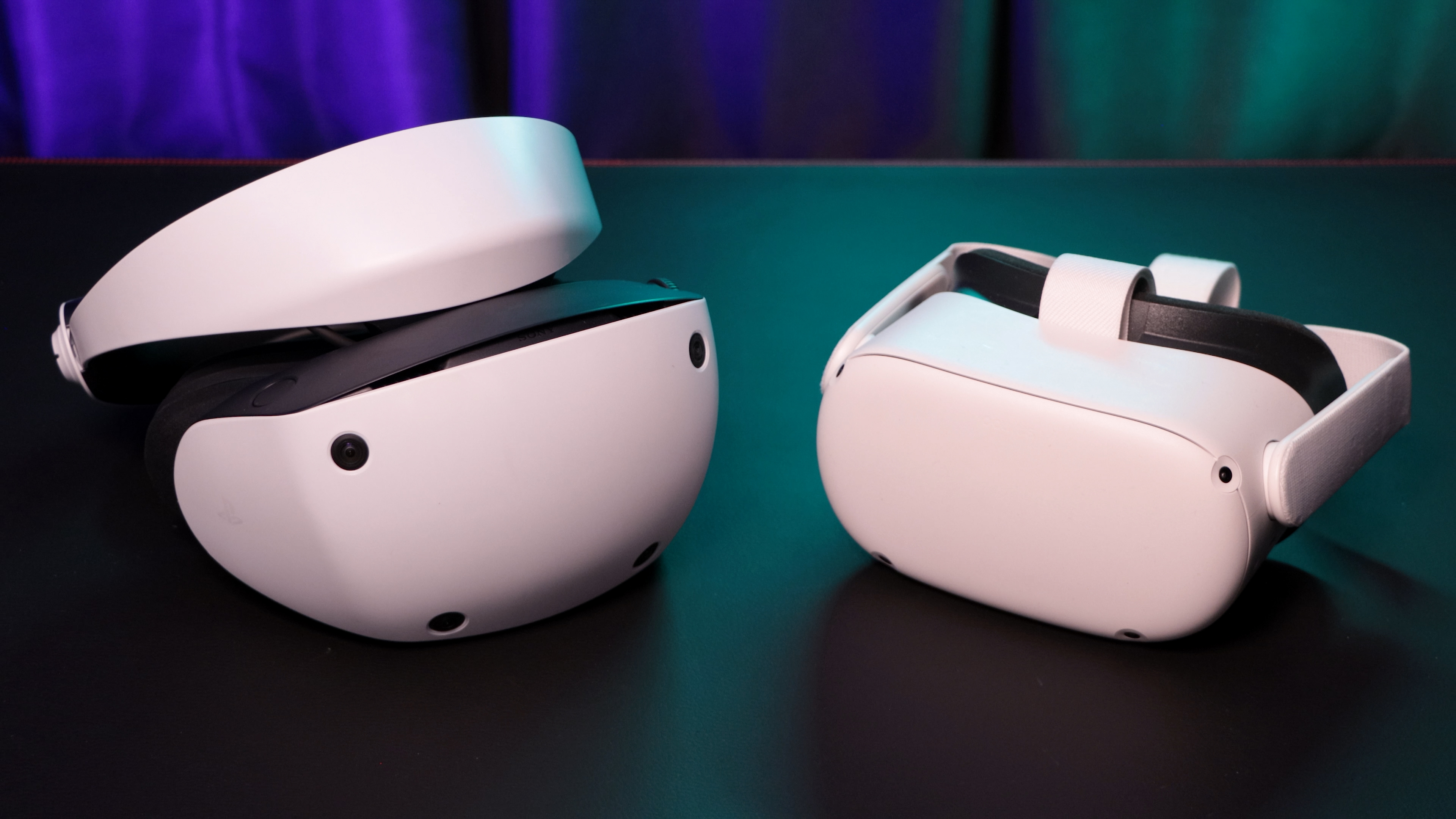
Value for money
A lot has been said about PSVR 2's price, and for good reason. If you're going to splash out on a PS5, or have done already, that's a $500 / £500 investment, at least. To then spend the same, if not more, on a VR headset that can only be used with said PS5, seems a tad over the top.
There's no way around it - PSVR 2 is a pricey hardware investment, and one that's limited by software at launch. That's not to say that the few day one games available aren't great. Horizon Call of the Mountain, The Last Clockwinder, Gran Turismo 7, and Resident Evil Village will no doubt be highlights for early adopters. In addition, I can't remember a major console release where "there aren't many launch games" hasn't been a frequent criticism. Library shortages will no doubt dissipate with time, but even until then, I'd argue there's a surprising value for money to be had with PSVR 2.

Don't get me wrong, a hardware platform, at least in the console space, will live and die on its exclusive game offerings. However, features like Cinematic Mode allow you to get some very special bonus usage out of PSVR 2, bringing your favorite non-VR games to life in unique ways. I wouldn't be doing my job well if I didn't mention that PSVR 2 is seriously missing out by not being backwards compatible with PSVR 1. Sony has made big plays into the PC market in the last year as well, could we potentially see them opening up PSVR 2 to the platform with the most games? These things surely would have eased a lot of launch window complaints.
What is important to consider is this: PSVR 2 is still notably cheaper than a lot of other VR headsets of this quality. Compared with the HTC Vive Pro 2, for example, which frequently tops the VR charts thanks to its wide FOV and sharp resolution. A Vive Pro 2, Vive XR Elite (which is also hits shelves this month), or even a Valve Index, will set you back circa $800-$1000. Keep in mind, that's on top of the probable grand or more you'll need to spend on a gaming PC that'll make the most of it. All things considered then, you're talking double what PSVR 2 and a PS5 will cost you for another headset of this calibre.
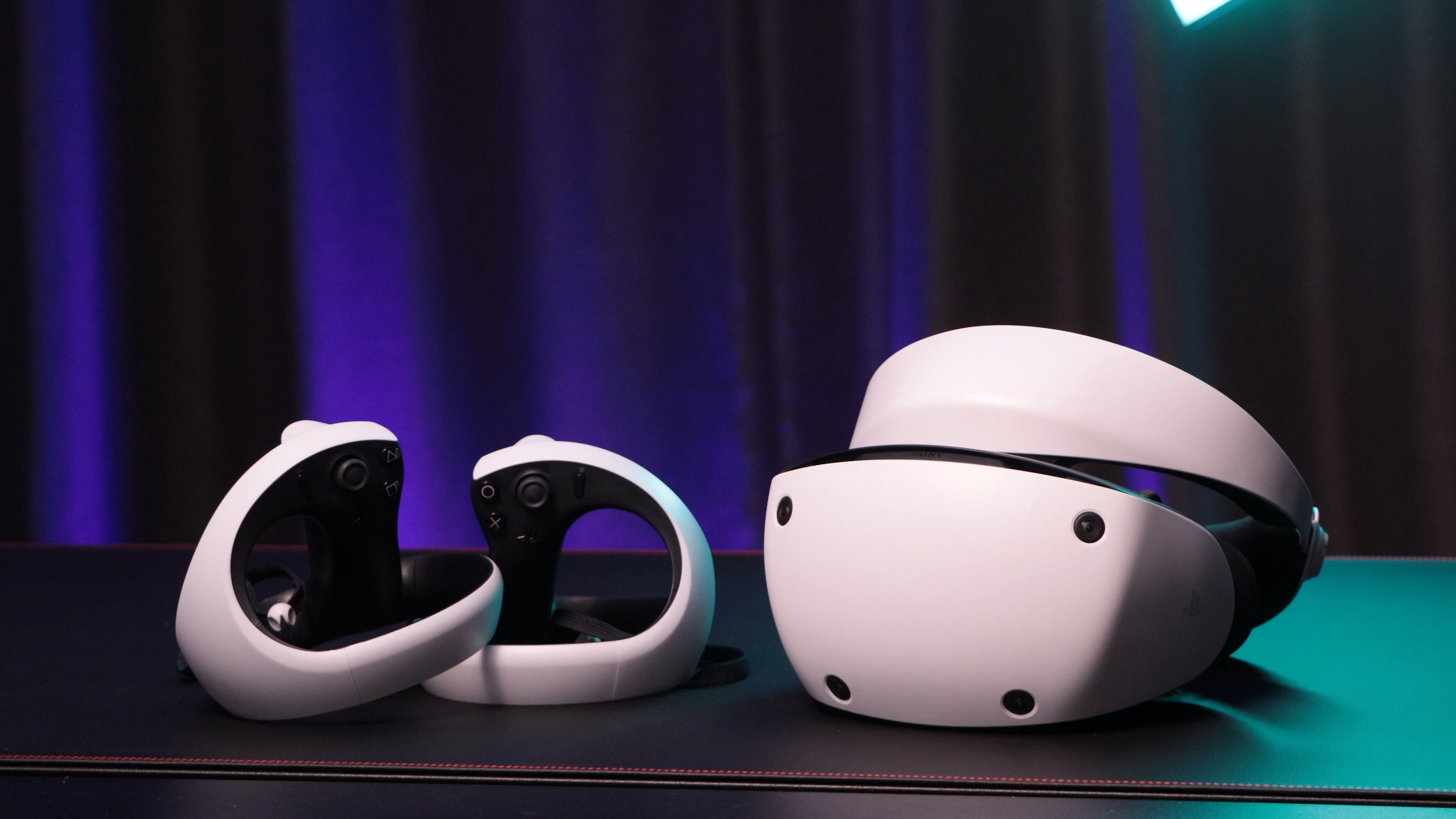
Should you buy PSVR 2?
PSVR 2 won me over during my time with it. In the current financial climate, where the cost of living is high, and gaming hardware is extremely pricey, I don't want to recommend anyone a "console peripheral" that's as expensive as PSVR 2 if it isn't massively worth it in the long run. But like PSVR before it, this reminded me of an undeniable fact; this is more than an add-on. This is a new way to play, and a window into what the future of gaming could be.
I'd agree that PSVR 2 is expensive if you consider it an add-on for the everyday PS5 fan, but I'd also argue that as a VR headset, there's deep value for money here. If you have the budget for it, and you have enough of an interest in VR games to get use out of it, PSVR 2 is a showstopper.
Should you buy a PSVR 2 immediately? No, I'd argue you shouldn't. There are only going to be more games available to play further down the line, and unless Sony follows Meta's footsteps with the Quest 2, it's highly unlikely that PSVR 2 will get more expensive. Should Sony support this half as much as it did with its first VR headset, PSVR 2 will be worth its weight in gold in the not-too-distant future.
How we tested PSVR 2
I spent about a week with PSVR 2, testing in as wide a selection of spaces as I could. Although I usually work remotely up in Scotland, I got to travel down to our Bath offices for the review window. I set up PSVR 2 in the GamesRadar office, our video studio, and in a more homely setting (thanks to Editor-in-Chief Sam for allowing me to borrow her living room for a day). PSVR 2 tracked every room I used it in with ease, and never failed to warn me if I was about to put my hand through a screen, colleague, or my boss's cat.
To test the comfort and feel of the headset, I played with and without glasses, using the bundled earphone attachment as well as a selection of gaming headsets. Specifically, I used PlayStation's own Pulse 3D headset, which I found fit very well. I also used the Razer Blackshark V2, and HyperX Cloud Alpha Wireless. Both of these headsets worked fine, and arguably helped PSVR 2 to be more secure on my head. At points using the HyperX Cloud Alpha, I did notice an increase in pressure on my face and nose.
Testing out the VR gaming features was largely done by playing Horizon Call of the Mountain, Moss Book II, The Last Clockwinder, and Star Wars: Tales from the Galaxy’s Edge – Enhanced Edition. To test out the Cinematic Mode, I played an hour of Returnal (which flew by like 20 minutes), and God of War Ragnarok.
If you'd like to read more about how we test gaming tech at GamesRadar, take a look at our Hardware Policy.
Spruce up your PS5 loadout in other ways by looking at our lists for the best PS5 headset, best PS5 controllers, and best TVs for PS5 and Xbox.
One of my earliest memories is playing SuperMario64 and wondering why the controller I held had three grips, but I only had two hands. Ever since I've been in love with video games and their technology. After graduating from Edinburgh Napier University with a degree in Journalism, I contributed to the Scottish Games Network and completed an Editorial Internship at Expert Reviews. Over the last decade, I’ve been managing my own YouTube channel about my love of games too. These days, I'm one of the resident hardware nerds at GamesRadar+, and I take the lead on our coverage of gaming PCs, VR, controllers, gaming chairs, and content creation gear. Now, I better stop myself here before I get talking about my favourite games like HUNT: Showdown, Dishonored, and Towerfall Ascension.
